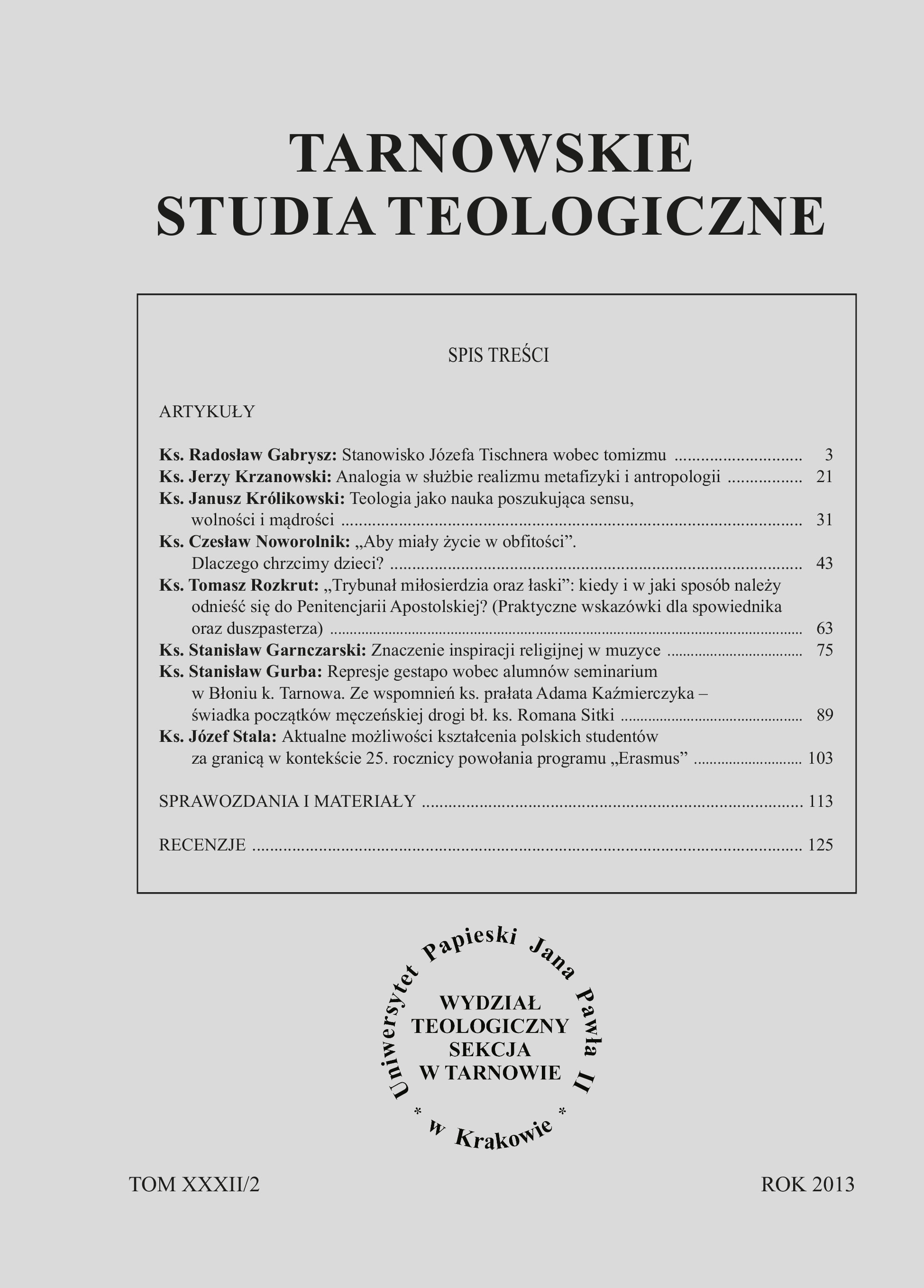The analogy at the service of realism in metaphysic and anthropology
DOI:
https://doi.org/10.15633/tts.319Keywords:
analogy, composition of intra-being, metaphor, attribution, proportionality, predicate, inferenceAbstract
1. In this article we presented a metaphysical analysis of the analogy, presenting it as an essential condition for ontological and cognitive realism.
2. We use analogy every day, both in philosophy and in ordinary life, expressing ourselves, description of reality, etc.
3. The analogy is briefly saying “similarity of dissimilar”.
4. The analogy occurs in the ontological, cognitive and language aspect (predication), providing them with realism. The main aspect is the aspect of the ontic.
5. Apart from realistic analogy, there is also the analogy in poetry and language of mysticism, called a metaphor or parable. However, it is connected with subjective and experiential human world.
6. The analogy exists primarily as a way of cognition, which reveals ontological pluralism of the world. This cognition is a reflection of analogical being in terms of its constituent compositions and both intra-being (integrating parts, essence and existence, substance and accidents, matter and form, act and potency, etc.) and inter-beings relations.
7. The analogy of cognition is realized as: metaphorical analogy, analogy of attribution and the analogy of general and transcendental proportionality.
8. In the predication we have to deal with analogy of predicates and the analogy of the predicate rule.
9. The analogical inference is an extension of analogy of predication.
Downloads
Published
Issue
Section
License
Copyright (c) 2013 Jerzy Krzanowski

This work is licensed under a Creative Commons Attribution 4.0 International License.
Authors who publish with this journal agree to the following terms:
- Authors retain the copyright and full publishing rights without restrictions, and grant the journal right of first publication with the work simultaneously licensed under a Creative Commons Attribution 4.0 International License that allows others to share the work with an acknowledgement of the work's authorship and initial publication in this journal.
- Authors are able to enter into separate, additional contractual arrangements for the non-exclusive distribution of the journal's published version of the work (e.g., post it to an institutional repository or publish it in a book), with an acknowledgement of its initial publication in this journal.
- Authors are permitted and encouraged to post their work online (e.g., in institutional repositories or on their website) prior to and during the submission process, as it can lead to productive exchanges, as well as earlier and greater citation of published work (See The Effect of Open Access).

